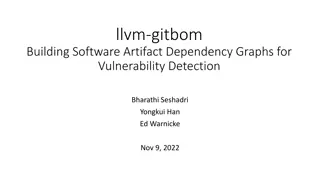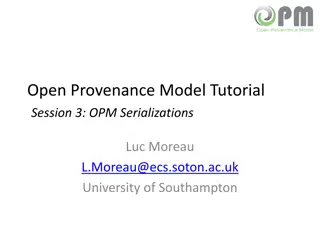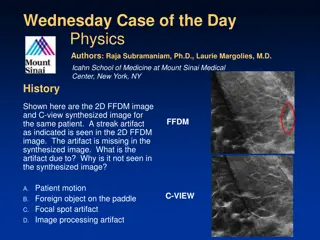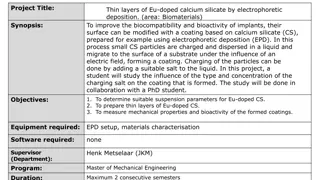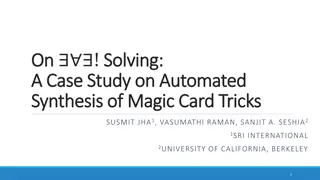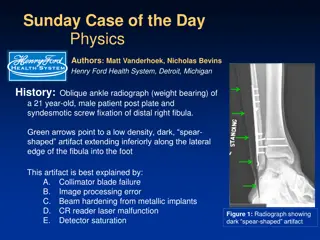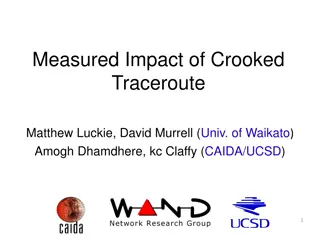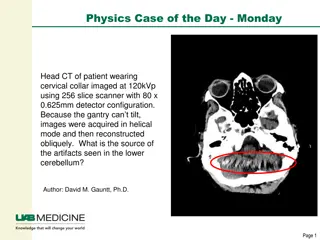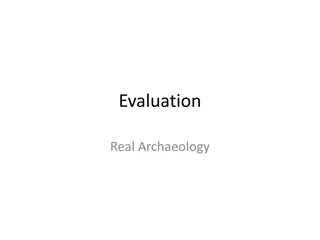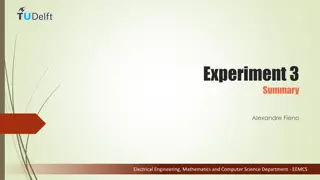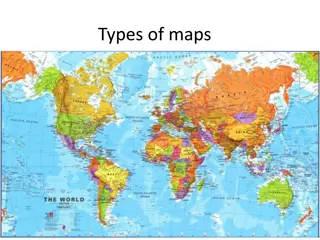The Legacy of the Cyrus Cylinder: First Charter of Human Rights
The Cyrus Cylinder is recognized as the first charter of human rights, influencing principles like freedom of religion and racial equality. This historical artifact documents Cyrus the Great's conquest of Babylon and his progressive deeds. Key components include freeing slaves, restoring temples, an
5 views • 15 slides
Understanding UML Deployment Diagrams
UML Deployment Diagrams show the execution architecture of software systems, illustrating how software deployment targets are assigned artifacts to nodes. Nodes represent hardware devices or software environments connected through communication paths, while artifacts are concrete elements deployed o
1 views • 22 slides
Leveraging Artifact Dependency Graphs for Software Vulnerability Detection
Explore how LLVM-GitBOM utilizes artifact dependency graphs to detect vulnerabilities in software dependencies. The presentation covers the overview of GitBOM, CVE detection, supply chain vulnerabilities, and the importance of precise build tools in vulnerability scanning. Learn about utilizing gito
0 views • 34 slides
Challenges in Medical Coding: A Critical Look at Errors and Solutions
Medical coding plays a crucial role in translating patient encounters into billable data, but incorrect coding poses significant challenges. Billing error rates are high, impacting providers, patients, and payers. Each step in the coding process has its issues, such as incomplete documentation and l
3 views • 5 slides
System Sequence Diagrams: Understanding Artifact for System Behavior
System Sequence Diagrams (SSDs) are vital artifacts that visually illustrate input and output events related to a system. They help define system behavior and interactions, making them essential during the logical design phase of software applications. By depicting events in sequential order, SSDs o
2 views • 24 slides
Insights into Biological Synthesis Techniques and Related Work
Explore the biological synthesis project by Sumay and Sumit Gulwani at MSR Redmond. The project delves into template-based approaches and safety considerations in artifact synthesis. The outline covers inductive synthesis, challenges, and successes in achieving synthesis goals. Discover unique namin
0 views • 15 slides
Overview of Open Provenance Model Tutorial Session 3
Explore Session 3 of the Open Provenance Model Tutorial, covering topics like the XML Schema for OPM, OWL ontology, OPM Layered Architecture, XML Binding, RDF Binding, and more. Dive into OPM Layered Model, XML Binding, OPM Graph, OPM Process, and OPM Artifact to understand specialized domains and e
0 views • 22 slides
Understanding Artifact Evaluation in Design Science Research
Explore the intricate process of evaluating artifacts in design science research with insights from Gondy Leroy, Ph.D., a seasoned expert in Management Information Systems. Discover the fundamental concepts, diverse study types, experiment design essentials, basic statistics, and contextual framewor
0 views • 71 slides
Revolutionizing Sonographic Blood Flow Measurement with PixelFlux
Novelties in PixelFlux technology offer a groundbreaking approach to sonographic blood flow measurement, enabling precise and accurate flow volume calculations through innovative features such as three-dimensional Doppler angle correction, pixelwise flow analysis, and dynamic measurements throughout
0 views • 12 slides
Indiana's Final Dilemma: An Epic Adventure Story
Set in a perilous jungle temple, Indiana faces the ultimate challenge as he confronts mysterious creatures and overcomes treacherous obstacles to claim a powerful artifact. With rich descriptions and engaging narrative techniques, the story culminates in a thrilling climax that will keep readers on
0 views • 6 slides
Understanding Agents in OPM Workshop by Luc Moreau
Delve into the concept of agents in OPM Workshop facilitated by Luc Moreau. Explore the nature of agents, their differences from artifacts, causes of their behavior, and challenges in their utilization. Discover the role of enactors, executables, and workflows in generating and controlling agents. U
0 views • 5 slides
Introduction to Ontology in Computer Science
Ontology is the study of existence, with applications in various fields like philosophy, linguistics, and computer science. In computer science, an ontology is an engineering artifact that defines a specific vocabulary to describe a domain, along with explicit assumptions about the vocabulary's inte
0 views • 33 slides
Understanding Breast Imaging Artifacts in Digital Mammography
The case study discusses a streak artifact in a 2D FFDM image, caused by the patient's hair. The artifact is absent in the synthesized C-view image due to the way tomosynthesis displays breast tissue, excluding areas above the paddle. References and discussions on mammographic artifacts and quality
0 views • 4 slides
Surface Modification of Implants Using Calcium Silicate Coating
Surface modification of implants using calcium silicate (CS) coatings prepared by electrophoretic deposition (EPD) is a promising technique to enhance biocompatibility and bioactivity. This project focuses on studying the influence of charging salt on the coating formation, preparing thin layers of
0 views • 5 slides
Automated Synthesis of Magic Card Tricks: A Case Study
Explore the intriguing world of automated synthesis applied to the creation of magic card tricks. Delve into high-level specifications, formal synthesis processes, and captivating card trick examples involving 4 cards. Witness the magic unfold as the bottom card always emerges as the odd one, experi
0 views • 24 slides
Understanding Image Processing Artifacts in Radiography
An oblique ankle radiograph of a patient showed a dark spear-shaped artifact extending from the leg to the foot, which was identified as an image processing error due to a black border imaging algorithm issue. The presence of metal in the leg caused the algorithm to fail, resulting in the artifact.
0 views • 4 slides
Understanding the Impact of Crooked Traceroute on Network Topologies
Traceroute-based algorithms play a crucial role in collecting network topology data, but the introduction of per-flow load balancing has raised concerns about the accuracy of these algorithms. This study examines the implications of crooked traceroute on false link inference rates and the identifica
0 views • 23 slides
Understanding Artifact Sources in Head CT Imaging
Head CT images of a patient wearing a cervical collar show artifacts in the lower cerebellum caused by oblique reconstruction from helical scans due to the gantry's inability to tilt. Dental implants contribute to beam hardening streaks seen in the image, particularly evident in a sagittal view exte
0 views • 5 slides
Understanding Phases of Archaeological Evaluation for Site Preservation
In historic preservation archaeology, the evaluation process involves distinct phases from background research to data recovery. During a Phase 2 evaluation, archaeologists assess a site's eligibility for listing on the National Register of Historic Places by determining its integrity and potential
0 views • 13 slides
Study on Digital Video Artifacts and Quality Metrics in Electrical Engineering
Study conducted by Alexandre Fieno in the Electrical Engineering, Mathematics, and Computer Science Department focused on analyzing the characteristics of digital video artifacts like blockiness, blurriness, and packet loss. The research aimed to understand how these artifacts impact video quality a
0 views • 21 slides
Exploring Different Types of Maps and Their Uses
Learn about various types of maps such as thematic, choropleth, isopleth, raised relief, topographic, political, contour-line, natural resource, military, bird's-eye view, artifact, satellite photograph, pictograph, and weather maps. Understand how to read maps and the significance of thematic maps
0 views • 15 slides


